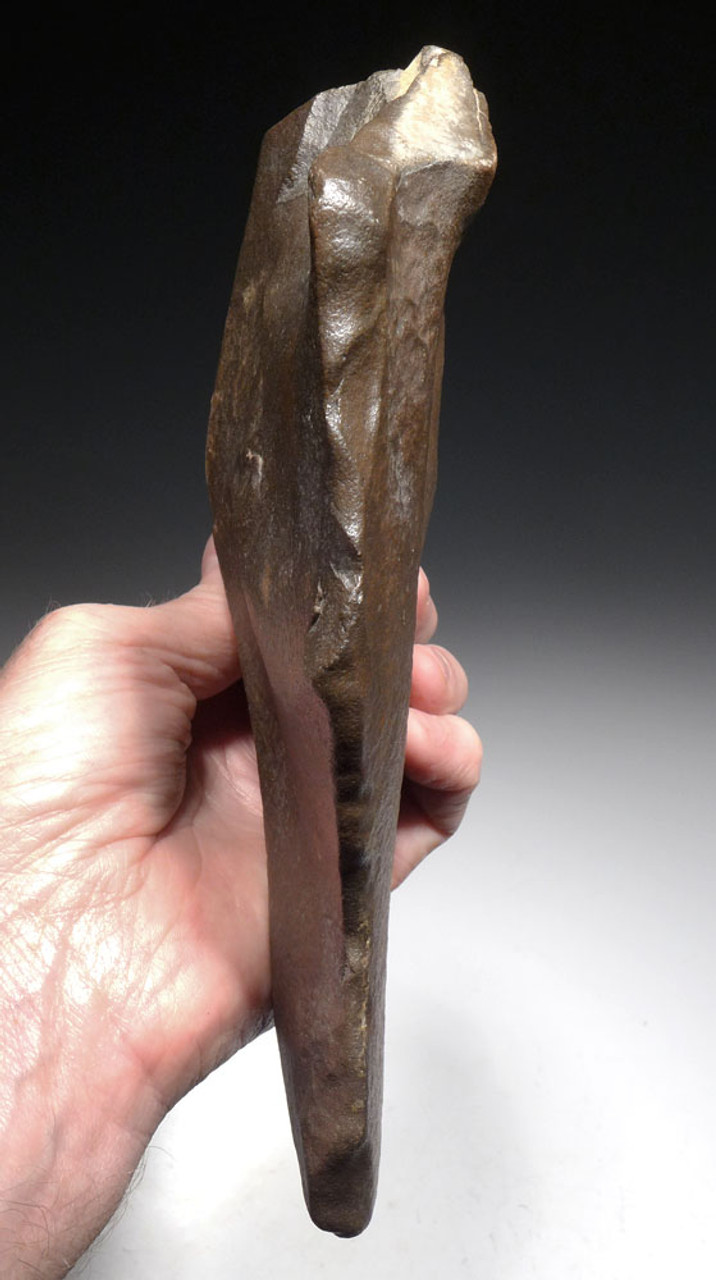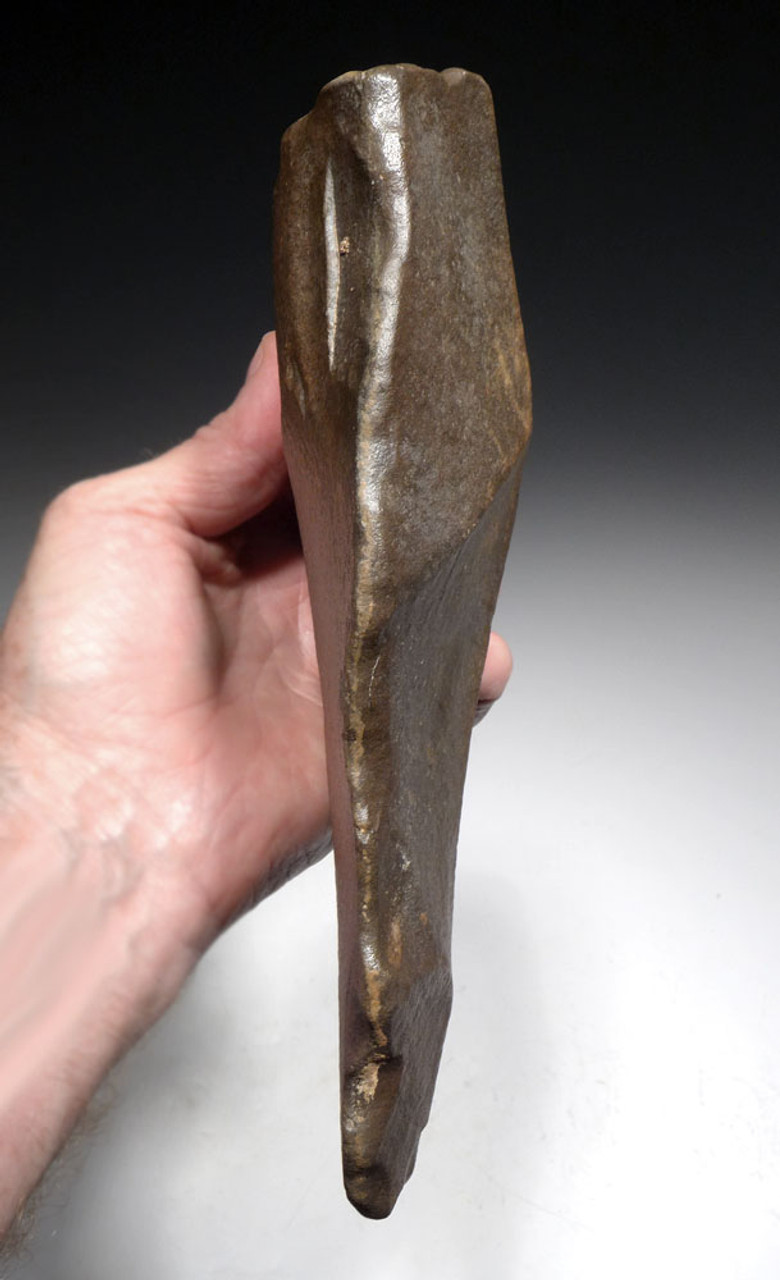Product Description
SEE MORE LOWER PALEOLITHIC ACHEULEAN STONE ARTIFACTS
This GENUINE Acheulean hand axe was made and used by early humans of the primitive species Homo erectus (ergaster). It was surface-collected from an exposed Lower Paleolithic Acheulian site in the Sahara Desert of Northwest Africa. Acheulean Lower Paleolithic hand axes from Africa represent the first scientifically documented intelligent tool made by primitive humans. Prior to these Saharan Acheulean handaxes, only crude pebble and flake tools existed in the human fossil record.
As one of the most IMPRESSIVE and finest made Lower Paleolithic African axes OF THIS TYPE we have ever sold, this hand axe is a supreme example of a TRIANGULAR UNIFACIAL HAND AXE. Being wider than most hand axes are long, it is unusually large and wide for its type. Despite its enormous size and weight, it features complete and undamaged narrow pointed tip on its chopping end. This stone hand axe would have been ideal for smashing and piercing the large limb bones of hunted game animals to access the prized marrow inside. Its massive weight and size, coupled with a very broad chopping edge, would have aided in cutting up large game animals to easily transport the meat and bone. The proximal end has been struck several times to create a grip where the hand axe would fit against the left hand palm for comfort, allowing the right hand to separate and pull the cut flesh and hide - ingenious early human thought manifest in its design. This hand axe demonstrates ARTISTIC APPRECIATION and ARTISAN PRIDE, as well as the skill and ability of Early Man's ability, to the highest order. It certainly warrants being considered "museum grade". It features every possible aspect of a prize specimen, not to mention its extraordinary size!
The flaking is superb and shows masterful craftsmanship from its primitive human artisan. The chopping tip and edges are intact and well-made with evidence of original prehistoric primary and secondary flaking. Surface areas of the tool display a "desert varnish" - a natural glossy surface where the artifact lay undisturbed and exposed to blowing sands, for millennia. The wind-driven sand polished and deposited microscopic layers of silica on the surfaces of the artifact, giving it a sheen. Original sediment and mineral encrustations are still present in microscopic crevices and on some surfaces - a trait ONLY found in authentic Paleolithic artifacts like these. These features are a testament to the age and authenticity of ALL Saharan Paleolithic artifacts.
HISTORY
During this time in prehistory when this Lower Paleolithic tool was made, the Sahara Desert (where this stone tool was found) was a savanna rich in wildlife. Prior to the prehistoric global warming that turned the vast region to desert, early humans lived alongside prehistoric giraffe, bison and elephant, which were vital to their survival. Hunting and butchering these animals would have required specialized tools such as those found in the Acheulian Period.
 US DOLLAR
US DOLLAR
 EURO
EURO
 AUSTRALIAN DOLLAR
AUSTRALIAN DOLLAR
 CANADIAN DOLLAR
CANADIAN DOLLAR
 POUND STERLING
POUND STERLING


























